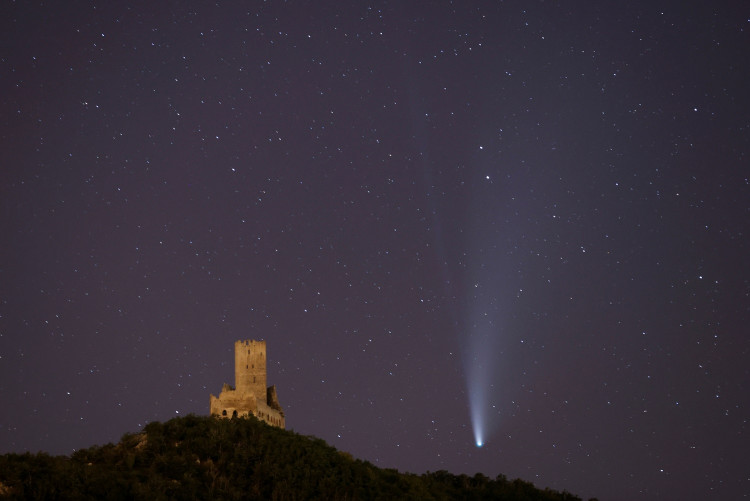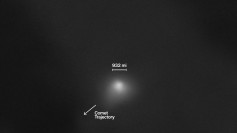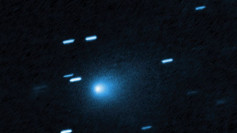Over the weekend, a newly found comet sped by Earth and is now heading back into the solar system. It will glow brightly in the night sky as it departs, just in time for Christmas.
As it burns away from Earth, Comet Leonard can be viewed in most locations of the U.S. Gregory Leonard, a senior research specialist at the University of Arizona, detected the comet earlier this year.
Comet Leonard's formal designation is C/2021 A1, and was first observed undergoing such an outuburst on Dec. 13. Many astronomers and astrophotographers were able to record the occurrence when it happened again on Dec. 20.
The dazzling outbursts could be caused by heat from the sun freeing ice and dust from the comet's core as it approaches our star. This might cause Comet Leonard's core to fragment and potentially blow away large chunks of ice and rock.
The comet, which passed close to Earth's nearest planetary neighbor Venus on Dec. 17 and 18, is best viewed through a telescope and binoculars. Comet Leonard is barely visible to the naked eye, located to the left of the brightest planet in the night sky. According to Spaceweather.com, it is best viewed from Earth's Southern Hemisphere.
For astronomers and stargazers, spotting Comet Leonard, a visitor from the solar system's beyond reaches, is likely a once-in-a-lifetime opportunity that is swiftly running out. On Jan. 3, the comet will pass the sun at a distance of 57.2 million miles, making it the closest object to our star. The comet will thereafter fade from view from our vantage point on Earth.
The likelihood of a return visit is dwindling. Even if the sun's extreme heat and radiation don't cause Comet Leonard to fragment further, its discoverer warns that it could be on its way out of our cosmic neighborhood forever.
"This is the last time we are going to see the comet," Leonard said.
Comets like Leonard provide scientists a unique opportunity to investigate the formation of the solar system. This is due to the fact that they are made up of stuff from our solar system's beginnings.
This is especially true when they have spent all of their time, like Leonard, on the cold edges of the solar system, away from the sun's light.
Leonard was captured on video by the Solar Orbiter Heliospheric Imager, which was shared by NASA and ESA. The comet is seen traveling across the Milky Way Galaxy.





